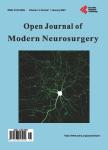Sinogenic Subdural Empyema in a Ten-Year-Old Boy with Sickle Cell Anemia
Sinogenic硬脑膜下积脓在一个十来岁的老男孩患有镰状细胞性贫血作者机构:Department of NeurosurgeryCentre Hospitalier Universitaire of Fort de FranceFort-de-FranceFrench West Indies Department of NeurosurgeryUniversity Clinic LeipzigLeipzigGermany Department of RadiologyCentre Hospitalier Universitaire of Fort de FranceFort-de-FranceFrench West Indies Department of AnesthesiologyCentre Hospitalier Universitaire of Fort de FranceFort-de-FranceFrench West Indies Department of PediatricsCentre Hospitalier Universitaire of Fort de FranceFort-de-FranceFrench West Indies Department of Oto-Rhino-LaryngologyCentre Hospitalier Universitaire of Fort de FranceFort-de-FranceFrench West Indies
出 版 物:《Open Journal of Modern Neurosurgery》 (现代神经外科学进展(英文))
年 卷 期:2013年第3卷第4期
页 面:53-58页
学科分类:1002[医学-临床医学] 100214[医学-肿瘤学] 10[医学]
主 题:Nasal Sinusitis Sickle Cell Anemia Streptococcus Pneumoniae Subdural Empyema
摘 要:Objective: Sinogenic subdural empyema remains a neurosurgical emergency, even in the antibiotic era. Sickle cell disease is one of the most frequent hereditary diseases, with an incidence of around 4 in 1000 newborns, which necessitates special considerations before a neurosurgical intervention. Case Description: The case of a 10-year-old boy with sickle cell disease type HbSC is reported, who presented with meningitis about ten days after a nasal sinusitis. CT and MRI showed subdural empyema and immediate intravenous antibiotic treatment was started. The patient received partial exchange transfusion. Craniotomy allowed evacuation of empyema and repairment of a frontobasal dural defect. Endoscopic evacuation of the paranasal sinuses was done in the same anesthesia. After initial good recovery, the patient developed right sided paresis with epileptic seizures a few days later. CT scan revealed three distant empyema recurrencies which were evacuated in a second neurosurgical intervention. The child recovered without neurologic deficit, and control MRI examinations three and twelve months after surgery found frontal and parietal dural thickening as sequelae. Conclusion: Urgent neurosurgical interventions in the presence of sickle cell anemia require special anesthesiologic preparations. An immediate, multidisciplinary approach can lead to a good outcome in these life-threatening situations.



